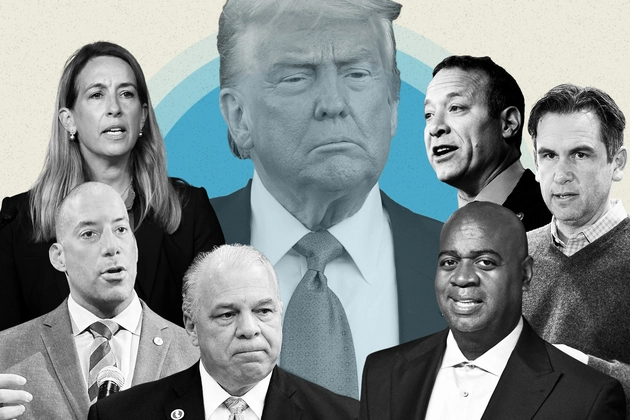New Jersey’s 2025 gubernatorial contest is entering its decisive stretch, and voters are being pulled into what is shaping up to be one of the most closely watched races in the country. Democratic Representative Mikie Sherrill and Republican Jack Ciattarelli are locked in a dead heat, according to recent polling, with affordability, high taxes, and the overall cost of living dominating the debate. The stakes are high, not only for Garden State residents but also for national observers, who see the race as an early indicator of voter sentiment ahead of the 2026 midterm elections.
A Contest Driven by Economic Anxiety
A recent Stockton University survey revealed that nearly two-thirds of New Jersey residents are dissatisfied with the economy, with many reporting their families are worse off financially than a year ago. Taxes remain the single most important issue, followed closely by affordability and broader economic concerns. That frustration is setting the tone for this year’s governor’s race.
Sherrill, a Navy veteran and congresswoman from North Jersey, is leaning into her record in Washington and her promises to expand affordability programs, defend federal funding for clean energy initiatives, and safeguard infrastructure projects like the Gateway Tunnel. Ciattarelli, a former state assemblyman who came close to defeating Governor Phil Murphy in 2021, is taking a hard line on tax cuts and state spending reductions. His message to voters is simple: New Jersey is too expensive, and Republican leadership is the way to fix it.
Both campaigns have zeroed in on New Jersey families’ wallets, but they are offering starkly different approaches to solving the state’s deep-rooted affordability challenges.
Pennsylvania as a Talking Point
One of the more unusual dynamics in this election is the repeated reference to Pennsylvania. Both candidates have invoked the neighboring state as a policy model in recent campaign stops. Ciattarelli argues that Pennsylvania’s tax policies and regulatory environment make it a more attractive place for businesses and residents, contrasting it with Murphy’s legacy. Sherrill, meanwhile, has highlighted Pennsylvania’s clean energy and economic development strategies as examples New Jersey should embrace.
The back-and-forth has kept Pennsylvania squarely in the spotlight, underscoring how closely tied the region’s economies are — and how New Jersey’s next governor could reshape the state’s competitive position.
Fallout from the Federal Shutdown
The recent federal government shutdown has also fueled heated exchanges between the two candidates. Sherrill criticized Ciattarelli for standing by former President Trump as his administration froze federal funding for the Gateway Tunnel project, a critical infrastructure lifeline for commuters in North Jersey. Ciattarelli’s campaign fired back, claiming Sherrill failed New Jersey families by voting against a Republican-backed bill intended to keep the government open.
Clean energy is another flashpoint. Reports that the Trump administration cut federal grant funding for renewable projects in New Jersey have given Sherrill an opening to argue that Democratic leadership is essential to protecting the state’s progress on climate policy. Ciattarelli has countered by insisting that New Jersey’s economic survival depends less on clean energy spending and more on comprehensive tax reform.
Ciattarelli’s Legislative Ambitions
For Ciattarelli, the governor’s race is about more than just the top office. All 80 General Assembly seats are on the ballot this November, and Republicans believe that a strong showing could help them chip away at Democratic dominance in Trenton. Ciattarelli has told supporters that his candidacy gives Republicans “wind at our back,” suggesting that a victory in the governor’s mansion could pave the way for a legislative shift.
Other Political Currents in New Jersey
The gubernatorial battle is not the only contest drawing attention. In South Jersey, a bitterly fought rematch for an Assembly seat is taking shape, with both sides preparing for a costly final push. Elsewhere, a state legislator has announced plans to file impeachment proceedings against the Gloucester County Clerk over allegations of an illegal ballot design.
Grassroots activism is also in the mix. The “Visibility Brigade,” a Paramus-based protest group founded in 2020, continues to stage demonstrations against Trump across the state’s bridges and overpasses. Meanwhile, the New Jersey Election Law Enforcement Commission (ELEC) recently fined 13 municipal candidates a combined $3,803 for campaign finance violations, underscoring ongoing scrutiny of local campaigns.
A Race Too Close to Call
With just weeks to go, neither candidate has established a clear lead. Sherrill is working to keep Democratic voters energized in traditionally blue counties while reaching out to moderates in the suburbs. Ciattarelli is banking on high turnout in South and Northwest Jersey, areas that have trended Republican in recent elections.
For voters, the decision may ultimately come down to pocketbook issues. New Jersey residents consistently cite high taxes, rising housing costs, and day-to-day affordability as their top concerns. Both campaigns know that whichever candidate can connect most effectively on those anxieties will likely come out on top.
National political strategists are watching closely. If Democrats hold on in a high-cost, high-tax state like New Jersey, it could signal resilience ahead of 2026. But if Republicans notch a victory, it could energize the party’s base and change the national narrative heading into the next election cycle.
As New Jersey barrels toward November, the intensity of the race is only expected to grow. The state’s future direction — from its economic policies to its national political influence — hangs in the balance. For more updates on statewide races and the latest political developments, visit Explore New Jersey Politics.











